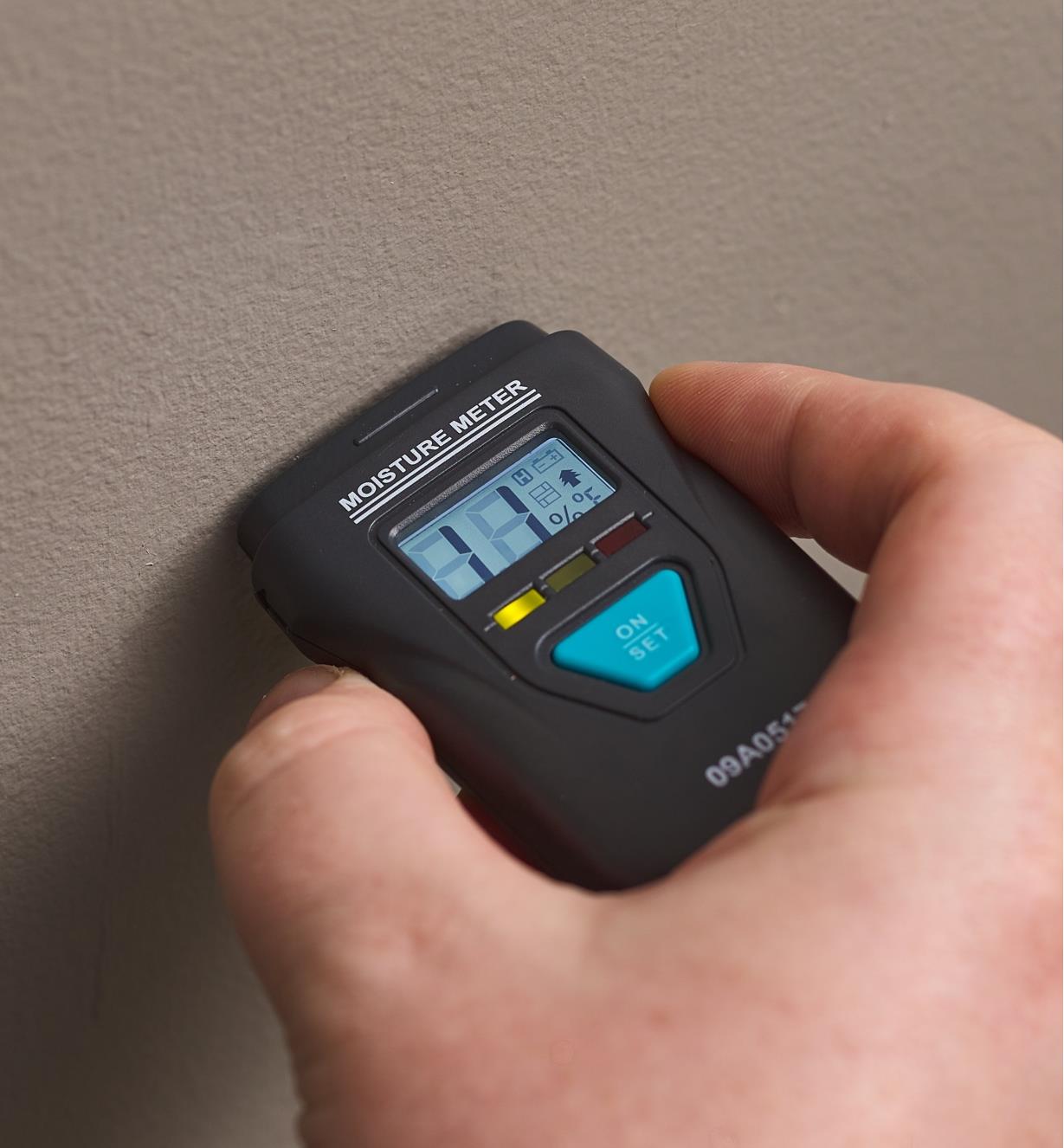The Ultimate Guide to Choosing the Right Moisture Meter for Your Needs
The Ultimate Guide to Choosing the Right Moisture Meter for Your Needs
Blog Article
Understanding the Value of a Moisture Meter in Avoiding Mold and Water Damage in your house
In the world of home upkeep, the visibility of moisture can often be a quiet yet formidable opponent, capable of creating pervasive mold and mildew growth and perilous water damage if left uncontrolled. Understanding the relevance of a dampness meter in this battle is not just an option but a tactical requirement.
Relevance of Moisture Discovery
Efficient moisture detection techniques are crucial for guarding homes and avoiding potential mold growth and water damage. Moisture can leak right into numerous structure products, bring about structural issues and carcinogen. By using a dampness meter, building proprietors can proactively recognize areas vulnerable to excess dampness, permitting for prompt treatment and mitigation approaches.
Moisture meters give precise readings of moisture degrees in different materials such as drywall, concrete, and timber. This data helps in pinpointing locations of worry, even in concealed or hard-to-reach places. Early discovery of wetness build-up allows prompt repairs or changes to prevent further damage.

How Moisture Meters Job
Wetness meters play a pivotal function in the aggressive recognition of excess dampness, aiding in the avoidance of possible mold and mildew growth and water damage by offering precise analyses of moisture levels in various building materials. Some advanced moisture meters integrate both pin and pinless technologies for extensive wetness detection. Recognizing how moisture meters function is necessary for prompt and accurate moisture degree analyses, enabling effective preventive steps versus mold and water damage.
Finding Early Indication
Upon initial evaluation of a property, identifying refined signs of excess wetness comes to be vital in the early detection of potential mold growth and water damages. Some typical early warning indications include stuffy smells, water stains on walls or ceilings, peeling off paint or wallpaper, and distorted or stained surface areas. Musty smells typically indicate the visibility of mold and mildew or mildew, even if no noticeable indications are apparent. Water spots can signal leakages or seepage, while peeling paint or wallpaper may be an outcome of wetness compromising the attachment of these materials to the surface. Deformed or tarnished surfaces, such as buckling floorboards or stained drywall, are clear signs of water damages. Additionally, a boost in allergic reaction signs and symptoms or breathing concerns among occupants might suggest the visibility of mold as a result of excess wetness. By immediately identifying and resolving these early caution signs, house owners can reduce the danger of extensive mold development and water damage in their homes.
Protecting Against Mold And Mildew Development
Acknowledging very early indication of excess wetness within a residential property not just makes it possible for timely discovery of possible mold and mildew development and water damage but likewise acts as a positive procedure in stopping the expansion of mold. To successfully stop mold development, it is critical to attend to any sources of moisture quickly. This can consist of taking care of leaks in home windows, pipelines, click here to find out more or roofing systems, ensuring proper air flow in damp locations like cooking areas and shower rooms, and using dehumidifiers in high-humidity areas. On a regular basis keeping the home and evaluating's pipes, roofing system, and seamless gutters can also assist in preventing water breach that might result in mold and mildew growth.
Keeping an eye on wetness levels in areas prone to wetness, such as cellars and crawl spaces, using a moisture meter can also assist in early discovery of raised wetness levels and possible mold development - Moisture Meter. By taking aggressive steps to prevent excess dampness and mold development, homeowners can guard their property and interior air quality.
Benefits of Normal Tracking
Regular surveillance of wetness degrees in a property can play a crucial function in maintaining a healthy indoor environment and protecting against prospective mold and mildew and water damage. By routinely examining wetness levels, property owners can detect any problems immediately and take essential actions to prevent mold and mildew development and water damages. One of the vital benefits of normal surveillance is very early detection. By identifying and dealing with high dampness levels early, homeowners can step in prior to mold and mildew has the chance to spread out and establish. This positive strategy can conserve both money and time in the future by preventing extensive mold remediation and fixing expenses.
Moreover, normal monitoring allows house owners to track patterns and fads browse around these guys in dampness degrees over time. Eventually, the regular tracking of wetness levels encourages home owners to protect their home, safeguard their health, and maintain the stability of their interior setting.

Final Thought

By utilizing a wetness meter, residential property owners can proactively determine areas prone to excess dampness, enabling for timely intervention and reduction approaches.

Monitoring dampness degrees in locations vulnerable to wetness, such as basements and crawl areas, making use of a wetness meter can also assist in very early detection of raised wetness degrees and possible mold development. (Moisture Meter)
Report this page